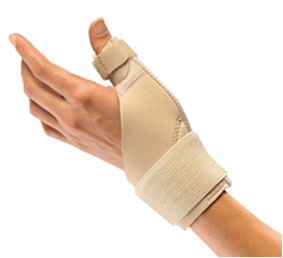Category Archives: Finger

Thumb Joint Replacement Surgery in India

Planning your medical trip to India is a very simple process with Joint Replacement Surgery Hospital India
- You just need to fill in our enquiry form and one of our executives will contact you soon.
- +91-9860432255 Call us at the given contact number for any assistance.
- Complete information regarding surgery is provided on our website.
Introduction-
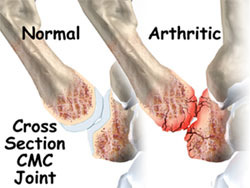 Your doctor may recommend a thumb joint replacement surgery if the non-surgical treatments were not successful to ease the problems of thumb arthritis. In this article, we’ll help you to understand the following:
Your doctor may recommend a thumb joint replacement surgery if the non-surgical treatments were not successful to ease the problems of thumb arthritis. In this article, we’ll help you to understand the following:
- Which parts of the thumb are involved?
- How the surgeons perform this surgery?
- What to expect before and after the surgery?
Anatomy-Which parts of the thumb are involved?
The carpometacarpal joint or CMC joint of the thumb is where the metacarpal bone of the thumb attaches to the trapezium bone of the wrist. Sometimes, it is referred as the basal joint of the thumb. The CMC joint allows you to move your thumb into your palm, a motion is called opposition.
Several ligaments hold the joint together to form the joint capsule of the CMC joint. The joint capsule is a watertight sac around the joint. The joint surfaces are covered with a material called as articular cartilage, which is a sticky, spongy material that covers and allows one side of a joint to slide against the other joint surface. When this material wears out, the joint develops osteoarthritis that becomes painful.
Check out the Patient Testimonial, where the patient shares about their success stories from treatments through Joint Replacement Surgery Hospital India.
Hello, my name is Wendy Okonjo from Nigeria. I underwent thumb joint replacement surgery in India with the assistance of your surgery group. Earlier, I suffered with pain due to the arthritic pain in my right hand thumb for about three years. One of my friends had got her knee replacement surgery in India with your surgery group and shared her wonderful experience during her trip. She was impressed with the high quality medical services and care she received at the hospital. I contacted your surgery group and after discussing my medical conditions and sending my reports, I got my surgery fixed with them. The surgeon was well-qualified and knowledgeable. He explained me about the surgery and what I should expect before the surgery. The nurses were so caring and very friendly. My surgery went well and I experienced minimal pain. After about five weeks of surgery, I am still trying to rebuild the strength. I am grateful to your surgery group for the dedicated efforts and wonderful support during this entire journey.
What does the surgeon hope to achieve?
The arthritic joint surfaces can be sources of pain, stiffness and swelling. It is used to replace the damaged joint surfaces so that patients can perform their activities with less pain. Unlike a fusion surgery, which binds the joint together, an arthroplasty can help to take away the pain while allowing the thumb joint to retain the movement.
How should I prepare for the surgery?
The decision to undergo the surgery should be jointly taken by you and your surgeon. You need to understand the procedure and clear your questions and concerns by talking with your surgeon. Once you decide on the surgery, you need to take several steps. You’ll be asked to undergo a complete physical examination by your regular doctor to ensure you are in the best possible condition to undergo the operation.
Secondly, this preoperative visit will prepare you for your surgery. You’ll begin to learn some of the exercises that you’ll use during your recovery. Your therapist will help you anticipate any special needs or problems that you may have at home, once you are discharged from the hospital.
You’ll probably be admitted to the hospital early in the morning on the day of the surgery. You shouldn’t drink or eat anything after midnight, the night before surgery.
What happens during surgery?
Before we describe the procedure, let us look at the artificial thumb joint. The surgeons will have several ways to replace thumb joint surfaces. One method is to attach the ends of a prosthesis implant into the bones of the thumb joint. A newer method uses a small, marble-shaped implant to form the new joint surfaces. The spherical implant works like a ball bearing to give the joint a smooth arc of the movement.
The procedure takes about two hours to complete. The new method using the ball implant takes about 30 to 60 minutes. The surgery may be performed under general anesthesia or local anesthesia. Once you have anesthesia, your surgeon will ensure that the skin of your hand is free of infection by cleaning the skin with a germ-killing solution.
During the prosthesis implant procedure, an incision is made across the base of the thumb while the soft tissues are spread apart with a retractor. Special care is taken not to damage the nearby nerves going to the thumb. The joint capsule is opened, exposing the CMC joint. The ends of the bones forming the CMC joint surfaces are then taken off, forming flat surfaces. A burr is used to make a canal into the bones to form the thumb joint. The surgeon sizes the stem of the prosthesis to ensure a smug fit into the canal and then inserts it. When the new joint is in place, the surgeon then wraps the joint with a strip of the nearby tendon to give the new implants some added stability and protection. Then the skin is stitched together and a splint is applied.
During the Spherical implant method, the thumb joint is used as a spherical implant that looks like a marble. Your surgeon makes a small, one-inch incision at the base of the thumb joint. The ends of the bones form the CMC joint surfaces which to removed to form the flat surfaces. A burr is used to make a small notch or canal at the ends of the two bones. Your surgeon shapes the notch so that the ball-shaped implant will fit smugly in the joint and places between the ends of the shaped bones. The soft tissues are then sewn together and the thumb is splinted and bandaged.
What happens after surgery?
After surgery, your thumb will be bandaged with a well-padded dressing and a splint for support. This splint will keep the thumb in a natural position during healing. Your surgeon will check your hand within five to seven days. The stitches will be removed after 10 to 14 days, though most of the stitches will be absorbed into your body. You will be given pain medication to control discomfort after the surgery. You should keep your hand elevated above the level of your heart for several days to avoid swelling and throbbing. Keep your hand propped up on a stack of pillows while sleeping or sitting up.
What to expect during my rehabilitation?
A physical or occupational therapist will direct your recovery program. The rehabilitation time will depend on the type of procedure used. It may take up to three months after replacement with a prosthesis implant. The patients wear an arm-length cast with the thumb pointing out for about three weeks after this surgery. The patients are able to return back to their normal activity within three to five weeks after the spherical implant surgery. Since the surgery doesn’t require the surgeon to disturb the tendons near the joint so the recovery is faster. You can start the range of motion exercises involving the use of ceramic ball within one week after surgery.
The first few physical therapy treatments will focus on controlling the swelling and pain from the surgery. Your therapist will use a gentle massage and other hands-on treatments to ease the muscle spasm and pain. Strengthening exercises will be used to provide added stability around the thumb joint. You’ll learn to grip and support the items to do your tasks safely and with the least amount of stress on your thumb joint. As with any other surgery, you should refrain doing too much too quickly.
Some of the exercises will be designed to get your hand and thumb working in ways that are similar to your work tasks and daily activities. Your therapist will find better ways to do the tasks that don’t put too much stress on your thumb joint. Before the end of your therapy sessions, your therapist will teach you a number of ways to avoid further problems.
The goal of the therapist is to help you keep the pain under control, regain the fine motor abilities with your hand and thumb and improve the strength and range of motion.
Thumb Joint Replacement Surgery Hospital India
Indian Hospitals are becoming a more important component of medical tourism. India is at the center of this concept. Based in Nagpur, the hospital provides all the amenities and services that one would require to get their health back to normalcy. It is well connected with Mumbai and Pune, two of the travelling behemoths in India, which makes it one of the most accessible hospitals in India.
Thumb joint replacement surgery is one of the most critical surgeries among all, and is mainly required because of arthritis of the thumb joint. There is no medical treatment available for thumb joint arthritis. This arthritis might become painful and decrease the movement of the thumb joint. The only option one has, is cortisone injections, but that too is a limited option, as one cannot take an unlimited amount of cortisone injections. Therefore, one has no other option but to sign up for thumb joint replacement surgery.
We have all the necessary, top of the line machinery and devices that = provide the right kind of support and service to people who sign up with us for medical treatment and medical surgeries. We have some of the most renowned and skilled surgeons and a large number of surgery related resources, which makes it easier to provide all the services that our patients and clients would require. We strive to be a single window service provider for all kinds of surgeries and related services.
Our hospital takes extreme care and concern when it comes to diagnosis of the medical issue that people are facing, to ensure that we, as well as our clients and patients get a clear picture of what they ail from, and how there can be a solution for it. We have a number of experienced and skilled doctors, surgeons and other medical personnel, who have been on our panel for a number of years. These surgeons are well known in the field, and provide only the best kind of service that would be required. With medical tourism, it is becoming a lot easier to travel to India for medical help. It is also the most economical option that is available. We understand the issues that people traveling from foreign countries for medical treatment might face, and therefore provide all the amenities and services – medical as well as non-medical – so that they have a safe and comfortable experience, and strive to be a single window service provider, ensuring that the patients and clients do not face any amount of inconvenience. With our country having diplomatic relations with almost every country, we as a hospital are well equipped to provide you with all the services, amenities and surgeries that you would require for a safe surgery and a healthy and safe future. Contact us today for your medical requirements, and we are sure that we will be able to provide you the best options.
If you are really seeking for Thumb Joint Replacement Surgery, kindly fill up the form for a free consultation with our surgeons. You will be provided with thorough analysis and suggestions regarding the Thumb Joint Replacement Surgery you are seeking.
Listen to the Voices of Our Happy Patients
FAQ’s
That is a decision that is best made between you and your treating physician. Typically, surgery is only considered if conservative treatments fail and the pain from arthritis continues to limit your activity or cause pain that is intolerable.
Most surgeons practice at one or two local hospitals. Find out where your operation will be performed. Have many of the operations you are thinking about having been done in this hospital? Some operations have higher success rates if they are done in hospitals that do many of those procedures. Ask your doctor about the success rate at this hospital. If the hospital has a low success rate for the operation in question, you should ask to have it at another hospital. Until recently, most joint replacement surgery was performed on an inpatient basis and patients stayed in the hospital for 1 or more days. Today, a lot of surgery is done on an outpatient basis in a doctor’s office, a special surgical center, or a day surgery unit of a hospital. Outpatient surgery is less expensive because you do not have to pay for staying in a hospital room. Ask whether your joint replacement surgery will be done in the hospital or in an outpatient setting. If your doctor recommends inpatient surgery for a procedure that is usually done as outpatient surgery, or just the opposite, recommends outpatient surgery that is usually done as inpatient surgery, ask why. You want to be in the right place for your operation.
Anesthesia is used so that surgery can be performed without unnecessary pain. Your surgeon can tell you whether the operation calls for local, regional, or general anesthesia, and why this form of anesthesia is recommended for your procedure.
Local anesthesia numbs only a part of your body for a short period of time, for example, a tooth and the surrounding gum. Not all procedures done with local anesthesia are painless. Regional anesthesia numbs a larger portion of your body, for example, the lower part of your body for a few hours. In most cases, you will be awake with regional anesthesia.
General anesthesia numbs your entire body for the entire time of the surgery. You will be unconscious if you have general anesthesia.
Anesthesia is quite safe for most patients and is usually administered by a specialized physician (anesthesiologist) or nurse anesthetist. Both are highly skilled and have been specially trained to give anesthesia. If you decide to have an operation, ask to meet with the person who will give you anesthesia. Find out what his or her qualifications are. Ask what the side effects and risks of having anesthesia are in your case. Be sure to tell him or her what medical problems you have including allergies and any medications you have been taking, since they may affect your response to the anesthesia.
Your surgeon can tell you how you might feel and what you will be able to do or not do the first few days, weeks, or months after surgery. Ask how long you will be in the hospital. Find out what kind of supplies, equipment, and any other help you will need when you go home. Knowing what to expect can help you cope better with recovery.
Ask when you can start regular exercise again and go back to work. You do not want to do anything that will slow down the recovery process. Lifting a 10 pound bag of potatoes may not seem to be “too much” a week after your operation, but it could be. You should follow your surgeon’s advice to make sure you recover fully as soon as possible.
Health insurance coverage for surgery can vary, and there may be some costs you will have to pay. Before you have the operation, call your insurance company to find out how much of these costs it will pay and how much you will have to pay yourself.
Ask what your surgeon’s fee is and what it covers. Surgical fees often also include several visits after the operation. You also will be billed by the hospital for inpatient or outpatient care and by the anesthesiologist and others providing care related to your operation.
After surgery, there is a significant recovery period. The thumb is casted, with a pin in place for one month, after which physical therapy is essential to regain flexibility and strength.
You can most definitely choose hotels as per your convenience to you and your budget.
You can talk to the doctor and satisfy all your medical queries. You can also send us your queries for answers from the top doctors.
To know about the procedure of getting an Indian Medical Visa, please go to our website where you will find all the details regarding the initial procedure. You can also send us a query regarding the same.
Yes. Many hospitals in India have language translators to help you communicate better and effortlessly with the doctors and medical staff.

Finger Joint Replacement Surgery Hospital India

Planning your medical trip to India is a very simple process with Joint Replacement Surgery Hospital India
- You just need to fill in our enquiry form and one of our executives will contact you soon.
- +91-9860432255 Call us at the given contact number for any assistance.
- Complete information regarding surgery is provided on our website.
Finger Joint Replacement Surgery Hospital India
“Better Prevent and Prepare rather than repent and repair”. In the fast paced life of today pain in the joints and the bones is a common recurrence and the first thing we do is to visit an orthopaedic surgeon. He has to exercise caution as surgery may not be the preferred option always, as depending upon the conditions and symptoms of the disease one could even resort to non surgical methods.
What should I do to prepare for surgery?
You should jointly decide with your surgeon to proceed with the surgery. You should understand the procedure and talk with your surgeon if you have any concerns or questions.
Once you decide on the surgery, your doctor will suggest a complete physical examination to ensure that you are in the best possible condition to undergo an operation. On the day of the surgery, you’ll be admitted to the hospital early in the morning. You shouldn’t eat or drink after midnight, i.e. the night before surgery. The length of time you spend in the hospital depends a lot on your recovery from anesthesia post surgery. Typically, a finger joint replacement surgery can be done on an outpatient basis, that means you can leave the hospital the same day.
Check out the Patient Testimonial, where the patient shares about their success stories from treatments through Joint Replacement Surgery Hospital India.
Hello, I am Mrs. Lydia Okilo from Nigeria. I visited India to get finger joint replacement surgery through Joint Replacement Surgery Hospital India. I used to experience pain and stiffness in my fingers that started interfering my hand movement while doing the daily activities. My doctor referred me to your surgery group as they provide high quality medical treatments and surgery at economical prices. After contacting them, I got a response from them within 48 hours. They explained me about the surgery and the surgeon also cleared my doubts via the tele-conferencing. I was impressed and gave them my consent to travel down to India for my surgery. They helped me with the medical visas and other arrangements during my stay in India. The hospital staff were professionals and took care of all my needs. My surgery went well. I am grateful to the surgeon, staff and the surgery group for the exceptional assistance throughout my medical trip to India.
What happens during the operation?
The surgeons use silicone plastic implants to replace the original joint surfaces. The artificial joint functions similar to a hinge on a door. The procedure takes about two hours to complete. It may be done either using a general anesthesia that puts you to complete sleep or a local anesthesia that only numbs your hand. With the local anesthesia you’ll be awake during the surgery, but you won’t be able to see the surgery.
Once you are given anesthesia, your surgeon will ensure that the skin of your hand is free of infection by cleaning them with a germ-killing solution. An incision is made across the back of the finger joints that are to be replaced. The soft tissues are them spread apart with a retractor. Special care is taken not to damage the nearby nerve that passes by the joint. Then the joint is exposed. The ends of the bones forming the finger joint surfaces are taken off, forming flat surfaces. A burr is used to create a canal into the bones forming the finger joint.
Then the surgeons sizes the stem of the prosthesis to ensure a snug fit into the hollow bone marrow space of the bone. The prosthesis is inserted into the ends of both the finger bones. When the new joint is in place, the surgeon wraps the joint with a strip of the nearby ligament to form a tight sac. This provides some added protection and stability to the new implant. The soft tissues are sewn together, and the finger is then splinted and bandaged.
What happens immediately after surgery?
After surgery, your fingers will be bandaged with a well-padded dressing and a splint for support. The splint will keep the finger in a straightened position during healing. Some patients are placed in an arm-length cast with the finger in a straightened position for about 3 weeks post surgery. Your surgeon will check your hand in five to seven days. Stitches will be removed after 10 to 14 days. You will be given pain medication to control discomfort after surgery. You should keep your hand elevated above the level of your heart for several days to avoid swelling and throbbing. Keep it propped up on a stack of pillows while sitting or sleeping.
What should I expect during my rehabilitation?
A recovery program will be directed by a physician or an occupational therapist. Recovery will take up to three months after a prosthesis is implanted. The first few therapy treatments focus on controlling the pain and swelling from the surgery. Your therapist may use gentle massage and other hands-on treatments to ease the muscle spasm and pain. Then you’ll be asked to begin with gentle range of motion exercise. The strengthening exercises are used to provide added stability around the finger joint. You’ll learn the ways to grip and support items in order to do your tasks safely and with the least amount of stress on your new finger joint. As with any other surgery, you’ll need to avoid doing too much, too quickly.
Some of the exercises are designed to get your hand and fingers working in ways that are similar to your work tasks and daily activities. The goal of the therapist is to help you keep the pain under control, improve your strength and the range of motion as well as regain the fine motor abilities with your fingers and hand. The regular visit to a therapist’s office will end when you are well underway.
Why Choose Joint Replacement Surgery Hospital India for Finger joint replacement surgery?
Since this involves a critical part of our body, choosing a top notch hospital would be the definite way to move forward. This brings us to the fundamental question on what are the advantages of choosing a good hospital. There are quite a few of them, but the expertise of skilled surgeons, superior support staff, state of the art facilities in terms of infrastructure are a few of them. In addition to this, English being the preferred mode of communication eradicates the communication barrier.
So, is there a hospital in the country which has all the above mentioned facilities. They have established their base in the city of Nagpur which belongs to the central portion of India. A visit to the hospital itself says a thing or two about the hospital. Their philosophy is simple and that is to provide quality health care at cost effective solutions to the patients.
All the operation theatres of the hospital are modelled as per the standards prescribed by the WHO and special attention is paid to the welfare and the safety of the patients. On the safety front there is a fire fighting system along with splinkers for the benefits of the patients. All the reputed surgeons in the country are part of their set up and the credentials of them are a testimony to the fact. They have hands on experience in performing several successful surgeries and their expertise is a sort out in various international conferences.
The buzz in the medical world is that any part of a joint can be replaced by an effective implant procedure. Most of the masses are well acquainted with hip, but Finger Joint Replacement Surgery is the newest craze in the medical world. It eradicates discomfort to a larger level and is more suitable for the older age group as compared to the younger lot. For the surgery to be performed the joints of the finger should be stable and have mobility. If these conditions are fulfilled, then only the surgery can be considered.
Though there are zero waiting lists in the hospital, it is recommended that the international patients book their surgery schedule in order to have any hassles in their medical journey. For this they can contact us via email or the phone numbers on the website and schedule their day in advance. In terms of payment, at least 30 % of the cost of surgery should be paid before flying down for the surgery and the outstanding can be cleared after coming down to the country.
If you are really seeking for Finger Joint Replacement Surgery, kindly fill up the form for a free consultation with our surgeons. You will be provided with thorough analysis and suggestions regarding the Finger Joint Replacement Surgery you are seeking.
Listen to the Voices of Our Happy Patients
FAQ’s
To begin, your physician will ask you some background questions regarding your hand history and any injuries you may have incurred. A physical examination will be performed and x-rays will be taken to identify the severity of your situation. In addition, in certain cases your surgeon will order blood tests. At this point, your surgeon will use his/her expertise to diagnose your condition.
The implant or prosthesis acts as a spacer to fill the gap that was created when the arthritic surfaces of the MCP (metacarpal phalangeal joint) or PIP (proximal interphalangeal joint) are removed.
The implant is made of medical grade silicone.
At least one week prior to hospital admission, you will need to visit your family physician or an internist to have a check up. If you are over the age of 40, you will most likely need to have a chest X-ray and an electrocardiogram (EKG) performed, in addition to appropriate blood and urine tests. If you smoke, it is important to stop two weeks prior to surgery and to consider quitting all together.
Your surgeon can replace all diseased joints in one hand during one surgery. When that hand has recovered, the other hand will have the necessary joints replaced. Most of the time, the surgeon will not do both hands at once.
Your arm will be elevated and immobilized in a splint, so you will not be able to move your hand. Blood staining may also be visible through the dressing for the first few hours after surgery.
You will most likely be seen by your surgeon various times after your surgery (i.e. 1 week, 3 weeks, 6 weeks, 3 months and 6 months). X-rays may be taken during these follow up exams if your surgeon feels they are necessary.
Joint Replacement Surgery Hospital India offers highest quality bone and joint health care with attentiveness, care and compassion to meet the needs of the patients and their loved ones. The medical team includes board-certified orthopedic surgeons who are familiar with all the aspects of the musculoskeletal system. Our hospital uses the most advanced technologies available for the orthopaedic procedures and has a lower complication rate.
You can most definitely choose hotels as per your convenience to you and your budget.
You can talk to the doctor and satisfy all your medical queries. You can also send us your queries for answers from the top doctors.
To know about the procedure of getting an Indian Medical Visa, please go to our website where you will find all the details regarding the initial procedure. You can also send us a query regarding the same.
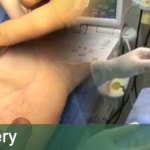
Why You Opt Trigger Finger Surgery in India?

Planning your medical trip to India is a very simple process with Joint Replacement Surgery Hospital India
- You just need to fill in our enquiry form and one of our executives will contact you soon.
- +91-9860432255 Call us at the given contact number for any assistance.
- Complete information regarding surgery is provided on our website.
Trigger finger Overview
Stenosing tenosynotvits in medical terms is referred to as trigger finger. Trigger finger in India is also known as the trigger thumb. The tendons that crook the fingers slide effortlessly with the help of pulleys. In fact, these pulleys hold the tendons close to the bone. It shows that when the pulley becomes too thick, then the tendon cannot glide easily through it. Trigger finger in India reviews of patients indicates that these are common with certain conditions like gout or diabetes.
How do I know if I am a good candidate for Trigger finger Surgery?
The patients who have undergone this form of surgery, reveal that the most common symptoms are
- Popping or pain
- Limited movement of the fingers
Trigger finger will start with a pain at the base of the finger or the thumb. This area is often sensitive to some kind of pressure.
Check out the Patient Testimonial, where the patient shares about their success stories from treatments through Joint Replacement Surgery Hospital India.
Hi, I am Dilobar Alimjan from Uzbekistan. Now that I am completely healed, I want you to know how pleased I am with your skill and care. I was diagnosed with trigger finger, but the surgery cost was over my budget. My husband and I started searching for a pocket friendly treatment option and we came across a healthcare consultant in India. After contacting you, we were explained about the trigger finger surgery and the entire process to get it done in India. They helped us with the medical visas and also the accommodation and food arrangements in India. The surgeon was a gentleman who cleared all our doubts and queries before the surgery. The nurses were so kind and caring. My surgery went smoothly. I am grateful to your healthcare consultants for assisting with the operation and now I gave gained full mobility.
Trigger Finger Procedure & Recovery & Effectiveness
The main goal of the treatment is to eliminate the pain and provide relief from the swelling. It should then allow for the free movement of the thumb and the fingers .Some of the common treatment measures include night splints, changing the level of activity along with steroid injection.
If non surgical methods do not help then Free Consultation Trigger finger in India can be of immense help. They can help you on how to plan ahead and go for the surgery. The main aim of the surgery is to open the pulley at the base of the finger so that the tendon can glide more freely. Finger motion can return quickly or there can be some amount of stiffness after the surgery. In some cases hand therapy is required after a surgery to restore the movement.
Why Opting Trigger Finger is necessary?
In most cases trigger finger is a nuisance rather than a serious disease. If it is not treated properly, then the thumb may stick to a bend position and this can make undertaking your daily activities a difficult job. The surgery is effective and it is rare for the problem to remain in the finger or the thumb. However, you need to take some time off from your work.
Why To Choose An Indian Hospital For Your Trigger Finger?
Indian hospitals have been a trend setter as far as medical standards is concerned. Affordable Trigger finger in India is provided by most of the hospitals in the country. Since English happens to be the official language of communication most of the patients tend to be at ease when communicating with the peers.
Trigger Finger Cost in India
The savings for the potential medical tourists are huge, and this is one of the most important factors which you look upon when you undertake treatment in India which is Low cost Wrist joint replacement in India. A point which needs to be noted is that the cost of surgery depends upon the individual needs and requirements of the patient. If you undertake a surgery in the United States, and compare the same cost of surgery in India you can save close to 60 % of the cost. This may include the hospital along with the travel expenses. This is possible of the lower operating costs along with the low conversion rates.
If you are really seeking Trigger Finger Surgery, kindly fill up the form for a free consultation with our surgeons. You will be provided with thorough analysis and suggestions regarding the Trigger Finger Surgery you are seeking.
Listen to the Voices of Our Happy Patients
FAQ’s
Joint Replacement Surgery Hospital India offers highest quality bone and joint health care with attentiveness, care and compassion to meet the needs of the patients and their loved ones. The medical team includes board-certified orthopedic surgeons who are familiar with all the aspects of the musculoskeletal system. Our hospital uses the most advanced technologies available for the orthopaedic procedures and has a lower complication rate.
Trigger finger surgery is a surgical procedure to treat the frequent sticking of one or more finger. An incision is made in the palm to cut open the A1 pulley. The A2 pulley is strong enough to take the burden and the procedure does not impact any physical or functional trait of the area. The release of the A1 pulley ensures smooth gliding of the flexor tendon without getting stuck.
There are two types of techniques used to perform trigger finger surgery.
- Open surgery or an incision on the palm to reach tendon pulley and cut the ligament.
- Percutaneous trigger finger release, where a needle is used back and forth multiple times to cut the pulley and free the flexor tendon.
A patient is considered for trigger finger surgery if there is no relief despite using nonsurgical treatment for long severe symptoms, including pain and swelling, cause disability over an extended period patient is unable to stretch affected fingers fingers remain fixed too often help of the other hand is needed to unlock the locked finger.
Trigger finger surgery is performed in an outpatient setting. The procedure depends on the type of surgery.
Open Surgery: An incision is made to access tissues at the flexor tendon sheath. The sheath is cut to reach the flexor tendons. The finger is flexed to assess the cause of sticking and how it catches at the A1 pulley. The pulley is cut and released after nearby tissues are pulled away. As the pulley is released, flexor tendons are pulled back and forth to confirm that they are gliding smoothly without facing any obstacle. Once confirmed, the incision is closed and bandage is applied. The entire procedure is performed under local anesthesia.
Percutaneous Trigger Finger Surgery: This surgical procedure is minimally invasive and performed through the skin without an open incision. Surgeons use a needle as a scalpel. The needle is inserted at the A1 pulley position. It is moved back and forth to cut the ligament. Once the surgery is done, it is taken out and the area is bandaged. The percutaneous trigger finger surgery is usually done under local anesthesia. It does create any incision and there is no need for healing. However, the procedure has its limitations. Its use is restricted to less serious conditions, as it may not be able to cut the more stiffened sheath and successfully release the pulley. The procedure may also cause damage to tendons or nerves.
The procedure takes about 15 to 30 minutes.
The surgery is an outpatient procedure and patients are discharged within an hour.
Patients require rest for one or two days after surgery to avoid any infection. Pain, swelling, and soreness return after the anesthesia wears off. Medication and therapy helps overcome these temporary surgical effects.
- Keep the bandage clean and dry.
- No driving for a week.
- Avoid grasping or pinching for 2 weeks.
- Keep your hand in a elevated position for 3 to 5 days to reduce swelling.
- Limit activities with the hand for 6 weeks
- No heavy lifting or repeated finger movements for 2 weeks.
- Trigger finger surgery does not require lengthy rehabilitation. You can start finger movements from day one to overcome stiffness and also do soft massaging. Limit the finger and hand exercises to your tolerance level and avoid repeated finger movements for 2 weeks. Press softball and open and close your hand several times a day for 3 weeks.
The finger and palm recover significantly in a week and gets better gradually. However, patients have to wait for 2 to 3 months to regain full finger strength. They can return to sedentary jobs after 3-4 days. But it is advised to have a 6-week break for jobs requiring repeated finger use, high-strength grasping, or hand vibration. Patients can start using keyboards or drive without pain after a week and play racquet sports in 3 weeks. They can join manual labor after 3-4 weeks. All stiffness goes in 6 months assuring complete recovery.
You can most definitely choose hotels as per your convenience to you and your budget.
You can talk to the doctor and satisfy all your medical queries. You can also send us your queries for answers from the top doctors.
To know about the procedure of getting an Indian Medical Visa, please go to our website where you will find all the details regarding the initial procedure. You can also send us a query regarding the same.
Many hospitals in India have language translators to help you communicate better and effortlessly with the doctors and medical staff.
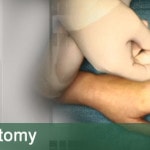
Dupuytren’s Fasciectomy in India: Things to Consider While Going For the Surgery

Planning your medical trip to India is a very simple process with Joint Replacement Surgery Hospital India
- You just need to fill in our enquiry form and one of our executives will contact you soon.
- +91-9860432255 Call us at the given contact number for any assistance.
- Complete information regarding surgery is provided on our website.
Dupuytren’s Fasciectomy Overview (what is Dupuytren’s Fasciectomy)
Dupuytren’ is a progressive disorder which has considerable effects on the palmar fascia that forces the fibrous tissue to curtail and congeal. Dupuytren’s Fasciectomy in India attributes the common causes due to environmental problems, variable expression of proteins along with growth factors in the local tissue.
How do I know if I am a good candidate for Dupuytren’s Fasciectomy Procedure?
Dupuytren’s Fasciectomy in India reviews indicates that more likely than not one is a good candidate if:
- Too much of smoking or alcohol is consumed
- Diabetes if one is too much dependant on insulin.
- Occupational exposure, which includes a heavy amount of manual work and vibration exposure.
Check out the Patient Testimonial, where the patient shares about their success stories from treatments through Joint Replacement Surgery Hospital India.
Hello, I am Irina Cairat from Kazakhstan. I was diagnosed with duputren and my doctor recommended my to undergo fasciectomy. A friend of mine suggested me to get my surgery in India as the cost is pocket-friendly and the services are high quality. I got my surgery fixed through Joint Replacement Surgery Hospital India. The executive helped me with travel and food arrangements. They also assisted with medical visas for my attendants. After I arrived at the hospital, my surgeon came to meet me and also cleared all my queries to make me feel easy and comfortable. Everything went well as planned. The hospital rooms were spotless and the services were excellent. The hospital staff was compassionate. I extend my sincere thanks to everyone, including my surgeon, nurses and the team of healthcare consultants for their wonderful services, support and care throughout the entire process.
Dupuytren’s Fasciectomy Procedure & Recovery & Effectiveness
More often than not the ring finger is affected which is followed by the little finger and then the middle one. There is pitting and thickening of the palmar skin where loss of mobility is experienced on the outer layer of skin. Other areas of the body which may be affected are the knuckles or the soles of the feet.
In most of the cases where Free Consultation Dupuytren’s Fasciectomy in India is undertaken, the surgeons are of the opinion that the patients do not develop significant amount of disability and no form of treatment will be needed. Treatment is usually needed when any form of functional disability occurs. It aims to restore the movement of the hands and prevent progression. The procedures are performed as an outpatient procedure under the influence of local anesthesia. The exact time of the surgery varies and it depends upon patient to patient.
Why Opting Dupuytren’s Fasciectomy is necessary?
On a subjective basis the patient can evaluate the results. The functional point of the surgery is the free movement of the hands. More often than not people above the age bracket of 50 years are victims of this, but having said this it can occur in the young age group as well
Why to choose an Indian Hospital for your Dupuytren’s Fasciectomy?
Medical tourism can broadly be defined as Affordable Dupuytren’s Fasciectomy in India. In many developing countries the development of the sector can be described as a part of the government policy. All possible support is provided to the development of this sector as the government has taken note of the fact that it is a major money spinner. Relaxations in the form of visa on arrival are making it pretty easy for the patients to choose India as the obvious destination for their medical needs.
India has some of the best medical professionals in the world, a fact which the world has taken notice off. Even the doctors who practice their skills in India are of the highest order. The facilities are world class which one can compare it to the rest of the world. The state of the art hospitals along with quality manpower ensures that you can avail Low cost Dupuytren’s Fasciectomy in India without any headache.
Dupuytren’s Fasciectomy Cost in India
You can get your medical treatment in India at a fraction of a cost when you compare it to the rest of the world. A medical trip with a wonderful trip to the beautiful locations of the country would not be a bad idea at all.
If you are really seeking Dupuytren’s Fasciectomy, kindly fill up the form for a free consultation with our surgeons. You will be provided with thorough analysis and suggestions regarding the Dupuytren’s Fasciectomy you are seeking.
FAQ’s
Joint Replacement Surgery Hospital India offers highest quality bone and joint health care with attentiveness, care and compassion to meet the needs of the patients and their loved ones. The medical team includes board-certified orthopedic surgeons who are familiar with all the aspects of the musculoskeletal system. Our hospital uses the most advanced technologies available for the orthopaedic procedures and has a lower complication rate.
The signs of this disease are shown by what looks like scarring on the palms of your hands and the fingers. Fingers curling towards the palms happens when the fibrous connective tissue in the palms has thickened. This condition is known as Dupuytren’s Contracture.
Surgery not only straightens the fingers but also makes using your hand easier.
This procedure may be performed to different degrees: cutting the fibrous band in your palm or taking away the scarred skin and covering the area with skin grafts. The are a number of anaesthetic procedures available for this operation.
Any risks or complications will be discussed in advance of your treatment with your expert consultant.
- No overnight stay.
- Regular exercise of your hand and fingers will help recovery and get your hand back to normal more quickly, however, all exercise should be approved by your doctor first.
- Your hand may take a little time to feel normal after surgery.
- Symptoms of the disease start slowly. The first symptoms include firm nodules or bumps that form on the palm of the hand. Here’s what else you should know:
- Nodules may be tender at first, but they can become less painful as the disease progresses.
- Over time, thick bands of tissue form beneath the skin of the palm.
- In more severe cases, the fingers, especially the last two fingers, curl down into the palm and can’t be straightened.
- Symptoms can involve one or both hands and can range from just nodules to complete contraction of all the fingers.
Doctors do not know why the fascia in the palm of the hand becomes abnormal in people with Dupuytren’s contracture, but it tends to run in families. Here’s what else you should know:
- The disease rarely starts before age 40, but becomes more common with increasing age.
- People whose ancestors are from Scandinavia or other areas in northern Europe are at the highest risk. Two-thirds of men who are related to people with Depuytren’s contracture develop the condition. Having diabetes is another risk factor.
- Men may be at as much as 15 times greater risk than women. However, because women tend to get a milder form of the disease, they may simply not be diagnosed as often as men.
- Although drinking alcohol and cigarettes have both been linked to Dupuytren’s in a few studies, altering habits does not appear to modify the disease.
One factor that does not seem to increase your risk is working with your hands or having a hand injury.
Dupuytren’s contracture is not a life-threatening disease. Those with a milder form of the disease experience few limitations. For some people, the disease never progresses beyond the nodule stage. The disease comes on slowly, but if symptoms start at an early age, it may progress more quickly. The progressive form may end with one or both of hands frozen in a claw-like deformity, making it hard to grip or grasp, wear gloves, or even put your hand in your pocket.
Unfortunately, there is no cure for the disease and there is nothing you can do to stop its progression. Hand exercises may be helpful if you have a mild form of the disease or if you are recovering from surgery. However, in some cases, trying to stretch your hands or exercise your fingers may actually make the disease progress more quickly. Because every person is unique, check with your doctor to see what can help you manage this disease. If you have a milder form, you may experience few limitations. If the disease progresses to cause your hand to become deformed, you may need to see a hand specialist for treatment.
Treatment can slow down Dupuytren’s and may relieve some of the deformity that has already set in. Treatment options include:
- Steroid injections into the hand to relieve painful nodules
- Enzyme injections into the palm to break up thickened fascia
- Needle aponeurotomy where a needle is inserted through the palm of the hand to break up the fascia during this in-office procedure (recurrences are common)
- A reconstructive type of open hand surgery called fasciectomy/fasciotomy to remove or split the thickened fascia (recurrence rate is variable and based on multiple factors)
Surgical procedures help most people regain some movement in their fingers, but the contracture comes back in about 20% of people. After treatment, a splint may be used to keep the hand in the best position to heal. Physical therapy may be started with massage and strengthening exercises.
You can most definitely choose hotels as per your convenience to you and your budget.
You can talk to the doctor and satisfy all your medical queries. You can also send us your queries for answers from the top doctors.
We accept different methods of payment like, cash, plastic cash, via net banking, etc.
To know about the procedure of getting an Indian Medical Visa, please go to our website where you will find all the details regarding the initial procedure. You can also send us a query regarding the same.
Many hospitals in India have language translators to help you communicate better and effortlessly with the doctors and medical staff.
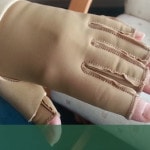
Trapeziectomy in India: Things to Consider While Going For the Surgery

Planning your medical trip to India is a very simple process with Joint Replacement Surgery Hospital India
- You just need to fill in our enquiry form and one of our executives will contact you soon.
- +91-9860432255 Call us at the given contact number for any assistance.
- Complete information regarding surgery is provided on our website.
What is Trapeziectomy?
Trapeziectomy in India is sometimes referred to as the surgery of the hands. In specific terms, it involves surgery of the thumb. It is a small bone at the base of the thumb. The process undertaken to remove the bone properly is known as Trapeziectomy
How do I know if I am a good candidate for Trapeziectomy Procedure?
The need of this procedure arises from cases of osteoarthritis. Typical cartilage deterioration is the prime cause for this disease and the body tries to overcompensate for the loss of cartilage by encouraging bone growth. Instead of eradicating the problem, more difficulty in the store paves way. An individual’s ability to perform certain tasks is also restricted such as applying a secure grip to a door handle.
Check out the Patient Testimonial, where the patient shares about their success stories from treatments through Joint Replacement Surgery Hospital India.
Hi, my name is Bakhtiyar Omar from Kazakhstan. My left thumb gave terrible trouble and my doctor in my native country told me to undergo trapeziectomy. I wasn’t sure whether to undergo it, so started searching about it online. I came across few medical tourism companies in India. After contacting them, I concluded to opt for my surgery through Joint Replacement Surgery Hospital India. The executive helped me with travel and food arrangements. They also assisted with medical visas for my attendants. After I arrived at the hospital, my surgeon came to meet me and also cleared all my queries to make me feel easy and comfortable. Everything went well as planned. The hospital rooms were spotless and the services were excellent. The hospital staff was compassionate. I extend my sincere thanks to everyone, including my surgeon, nurses and the team of healthcare consultants for their wonderful services, support and care throughout the entire process.
Trapeziectomy Procedure & Recovery & Effectiveness
It is generally an outpatient surgery. The arm is made numb with the help of local or general anesthesia. Afterwards the surgeon usually gains access to the trapezium by making an incision at the base of the thumb.
The post surgical procedures, however, are much lengthier. The stitching and the dressing must usually remain on the site for 2 to 3 weeks. Trapeziectomy in India reviews of patients indicate that they are required to wear a splinter for six weeks. During this time the patient is required to visit a physiotherapist and here they will be taught exercises which will prevent the thumb from getting numb and regain the lost abilities. The complete course of recovery may take close to 6 months.
Why Opting Trapeziectomy is necessary?
It is not only the thumb surgery in any way. In the surgical world, it is considered as one of the easiest form of surgery. Physicians do not employ this surgical measure as a primary and almost all the pain relief measures have been exhausted before the desired results are achieved.
If the trapezium is removed, it provides additional space for the other bones to move. This can provide a considerable amount of pain relief as the remaining bones which are arthritic are not in contact with the other surface. It can also help a person to regain the lost abilities which they have lost touch.
Why to choose an Indian Hospital for your Trapeziectomy?
Medical tourism is one of the quickest and fastest growing sectors in the country. Low cost Trapeziectomy in India is provided by most of the top quality hospitals in the country. Quiet often it becomes difficult for the international tourists to search for the best hospital in India where they can undertake Affordable Trapeziectomy in India. This is where the role of medical tourism companies comes into prominence. They act as a help hand and guide you at each and every step of your medical journey. Most of these companies have eminent medical panelists on board who can decide on whether surgery is the best outcome. Sometimes it is observed that without surgery alternative courses of treatment can yield the desired results. In this regard Free Consultation Trapeziectomy in India would not be a bad idea at all.
Trapeziectomy Cost in India
The cost of undertaking the treatment is on the lesser side when one compares it to the advanced countries. One can have a huge amount of saving which can help in spending on his own health and other post treatments followed in their own country.
If you are really seeking Trapeziectomy, kindly fill up the form for a free consultation with our surgeons. You will be provided with thorough analysis and suggestions regarding the Trapeziectomy you are seeking.
FAQ’s
Joint Replacement Surgery Hospital India offers highest quality bone and joint health care with attentiveness, care and compassion to meet the needs of the patients and their loved ones. The medical team includes board-certified orthopedic surgeons who are familiar with all the aspects of the musculoskeletal system. Our hospital uses the most advanced technologies available for the orthopaedic procedures and has a lower complication rate.
When non-operative treatments have failed to control the pain and the pain is:
- Moderate to severe
- Constant/ all the time
- Affecting sleep
- Stopping you from carrying out activities of daily living
Trapeziectomy’s are normally performed as day case surgery under a general anaesthetic or a regional block (where the arm is made numb using an injection). You will be sent home with dressings or a POP on and be seen by the consultant in 2/52 to remove the dressings. At this point you may be seen by a hand therapist who will:
- Provide a splint to be worn as protection as your thumb heals
- Give exercises to help you re-gain movement in your thumb
- Give advice on what kind of activity you should/shouldn’t be performing
- Give advice on strengthening your thumb
Things to consider before having a Trapeziectomy:
- Risk of infection through surgery
- Risk of nerve injury/ neuroma. A small nerve running through the region of where the surgeon is operating can be damaged during surgery. It may form a painful spot on / near the scar (a neuroma)
- Rehabilitation can take between 4-12 months
- Results from trapeziectomy vary depending on may different factors i.e. the individual, other health problems, severity of arthritis, etc.
- 80% of patients experience decrease in pain following surgery, 15% experience little or no change in pain and function and 5% are worse than before they had surgery
- Risk of problematic scar tissue. After the operation there is a risk that you may have problems with scarring, including tender/ sensitive scarring. Thick/ hard scarring causing reduced movement
- Risk of problematic scar tissue. After the operation there is a risk that you may have problems with scarring, including tender/ sensitive scarring. Thick/ hard scarring causing reduced movement
You can most definitely choose hotels as per your convenience to you and your budget.
You can talk to the doctor and satisfy all your medical queries. You can also send us your queries for answers from the top doctors.
To know about the procedure of getting an Indian Medical Visa, please go to our website where you will find all the details regarding the initial procedure. You can also send us a query regarding the same.
Many hospitals in India have language translators to help you communicate better and effortlessly with the doctors and medical staff.
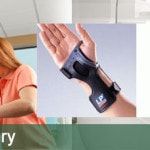
Carpal Tunnel in India: Things to Consider While Going For the Surgery

Planning your medical trip to India is a very simple process with Joint Replacement Surgery Hospital India
- You just need to fill in our enquiry form and one of our executives will contact you soon.
- +91-9860432255 Call us at the given contact number for any assistance.
- Complete information regarding surgery is provided on our website.
Carpal Tunnel Overview
Carpal tunnel in India is a surgery, that cuts a ligament in your wrist, to relieve pressure on your median nerve. The goal of this surgery is to relieve the pain, numbness and tingling caused by carpal tunnel syndrome. Carpal Tunnel in India reviews of patients indicates that the doctors, recommend less evasive treatment to relieve the pressure on the median nerve.
How do I know if I am a good candidate for the Carpal Tunnel Surgery?
To be able to undertake surgery, you need to find out if the pain or numbness in your wrist and hand is diminishing the quality of your life. The doctor may decide you are the best candidate if
- If the symptoms tend to exist for more than six months
- Non surgical treatment like brace, splint, medication or physical therapy has not yielded the desired results for seven weeks
If you finally decided for Low cost Carpal Tunnel in India then look out for an invasive form of surgery as it can pave the way for faster recovery and less pain than the normal surgery.
Patient Testimonial
Hello, I am Kevin Thomas from the US. During the past three to four years, I had progressively lost the feeling in my fingers. It has been very frustrating trying to type on my computer, pick up small items or button my shirt. My doctor recommended to undergo a carpal tunnel procedure, but I couldn’t afford the costly treatment back in my native place. I started searching for low cost treatment and came across various medical tourism websites in India offering the same. I was in touch with two of them and after detailed discussion over the phone, I was convinced with Joint Replacement Surgery Hospital India and gave them my consent to get treated in India. I am happy to choose you for getting my surgery done in India. I want to know how pleased I am with your skill and care. The surgeon made me feel easy and comfortable by answering all my queries. My surgery went smoothly. The hospital staff and the nurses took care of me. My bandages were off in ten days and six weeks later there is almost no sign of either operation and I have full mobility. Thank you everyone-my surgeons, nurses, executives of the healthcare group for their extensive care and support throughout my medical trip to India.
Carpal Tunnel Procedure & Recovery & Effectiveness
During the course of surgery, the surgeon opens the carpal tunnel release with large 1 to 2 inch incision and is more than likely to administer local anesthesia to the patient. After the procedure you may have to wear a brace for a few weeks, which will stabilize your wrist table while it is healing. You would be able to return to your normal activities after the course of the surgery.
The doctor may recommend physical therapy to aid in your recovery. In the due course of time you will gain wrist and hand function with less pain and tingling. Full recovery time ranges from 2 or 12 months.
Why Opting Carpal Tunnel is necessary?
Surgery works out to be an option when the symptoms return regularly and in most cases, they provide better relief than repeat injections. Most of the symptoms disappear after the surgery and one of the things that determine on how fast you recover is the extent to which the nerve may damage. The pain usually improves fast, but the abdominal sensations may take some form of time to disappear.
Why to choose an Indian Hospital for your Carpal Tunnel?
Medical tourism is one of the major money spinners for the Indian economy. As the number of diseases are on the rise and insurance coverage at a premium many of them do not prefer to get treated in their native land. For this reason Indian is witnessing a medical boom with patients flocking in from remote regions of the world. Affordable Carpal Tunnel in India is provided by most of the quality hospitals in the country. There are no waiting lists and the skilled surgeons do a great job. Most of the patients who have undertaken the treatment here are pretty happy with the level of services which the country has to offer. The government has taken notice of this and extended all possible support to this sector.
Carpal Tunnel Cost in India
Free Consultation Carpal Tunnel in India makes it a point that you can have an appointment with a surgeon and decide whether surgery is the only option. Getting it done in India ensures that the cost factor is taken care of itself.
If you are really seeking treatments for Carpal Tunnel Surgery, kindly fill up the form for a free consultation by our surgeons. You will be provided with thorough analysis and suggestions regarding the treatments for Carpal Tunnel Surgery you are seeking.
Listen to the Voices of Our Happy Patients
FAQ’s
Clinical data show that woman are actually as much as ten times more likely to develop carpal tunnel syndrome than men are. This is largely due to the fact that women tend to have smaller hands and thus a narrower carpal tunnel.
If needed, it is possible to address both hands in one operation. Doing so does not generally have any effect upon recovery time, but can increase the discomfort and pain experienced after surgery. The choice to treat both hands separately or at once is left to each individual patient’s discretion.
Carpal tunnel release surgery can be performed under local anesthesia. This makes it a fairly simple, outpatient operation. This means that patients can return home on the day of surgery without requiring overnight care.
Endoscopic surgery is a minimally invasive approach performed using an advanced surgical tool called an endoscope. The endoscope is composed of a thin tube with a miniature light and a camera on the end. In an endoscopic carpal tunnel release, the endoscope is inserted through a small incision in the palm. The area to be operated upon is then magnified and projected on a screen. The surgeon uses the images on the screen to guide the surgery, which is performed using a small instrument inserted through another small incision.
Minimally invasive or endoscopic surgery for treatment of carpal tunnel syndrome can dramatically increase the risk for complication. It can also make for a faster recovery, less pain and less scarring. One must of course bear in mind are risks involved in any form of surgery. Your surgeon can and will inform you these before your surgery.
You can most definitely choose hotels as per your convenience to you and your budget.
You can talk to the doctor and satisfy all your medical queries. You can also send us your queries for answers from the top doctors.
- We accept different methods of payment like, cash, plastic cash, via net banking, etc.
To know about the procedure of getting an Indian Medical Visa, please go to our website where you will find all the details regarding the initial procedure. You can also send us a query regarding the same.
Many hospitals in India have language translators to help you communicate better and effortlessly with the doctors and medical staff.
Joint Replacement Surgery Hospital India offers highest quality bone and joint health care with attentiveness, care and compassion to meet the needs of the patients and their loved ones. The medical team includes board-certified orthopedic surgeons who are familiar with all the aspects of the musculoskeletal system. Our hospital uses the most advanced technologies available for the orthopaedic procedures and has a lower complication rate.






